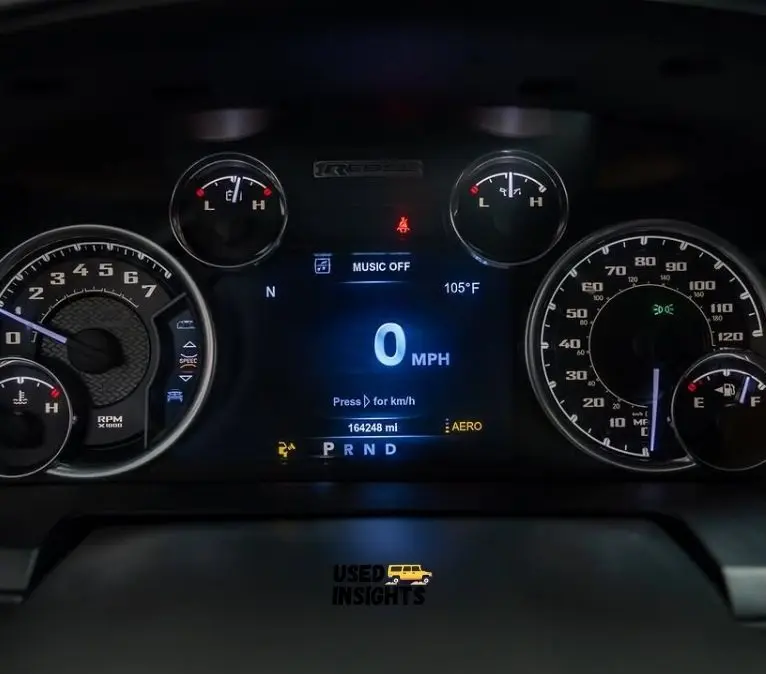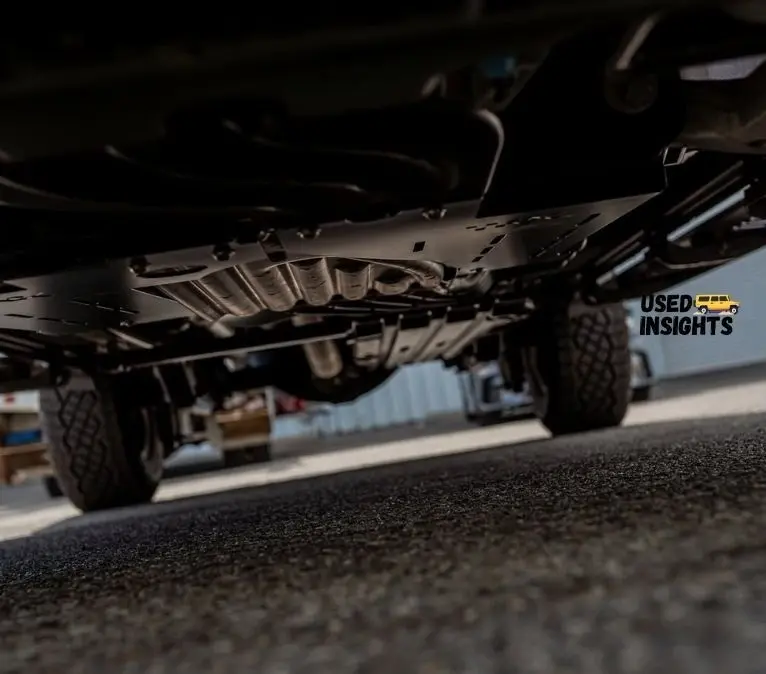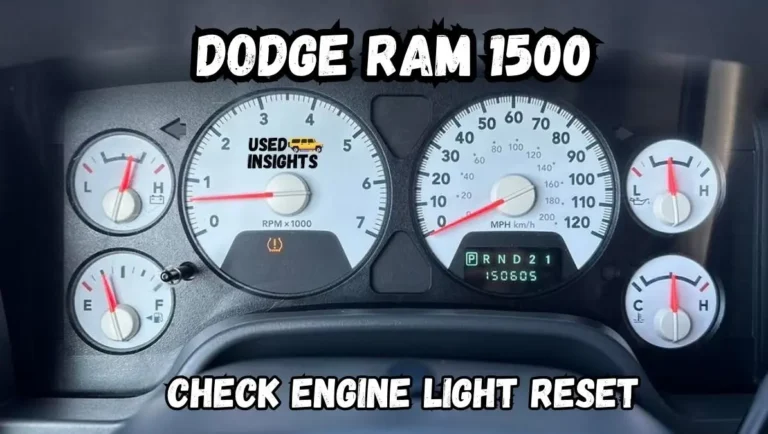Modern pickup trucks like the Dodge Ram 1500 incorporate sophisticated technological systems designed to optimize performance and fuel efficiency. The manufacturer has engineered the powertrain with cutting-edge components to deliver maximum capability. Since the engine serves as the heart of any vehicle, protecting its integrity remains a paramount priority.
This is precisely why automotive engineers have integrated comprehensive diagnostic warning systems to alert operators when potential issues are detected within any vehicle component. Among these critical indicators, the “Check Engine Light” stands out as a primary warning system that signals complications with the powertrain or associated systems.
Understanding the Importance of Check Engine Light Diagnostics
The illuminated check engine warning requires immediate attention since it can represent issues spanning from relatively minor concerns to potentially serious mechanical problems. Occasionally, this warning indicator may continue glowing even after the root cause has been properly addressed and resolved.
When this situation occurs, the warning system requires manual reset procedures. This comprehensive guide covers multiple proven techniques for resetting your Ram 1500’s check engine light, along with essential preventive maintenance recommendations.
Dodge Ram 1500 Check Engine Light Reset: Primary Method
In certain instances, your Ram 1500’s check engine indicator may remain illuminated following successful problem resolution. Manual reset procedures become necessary under these circumstances.
Follow these detailed steps to reset your Ram 1500’s check engine warning:
Step-by-Step Battery Disconnect Method
- Power Down the Vehicle: Completely shut off the engine and remove the ignition key
- Access the Battery: Lift the hood and locate the vehicle’s main battery assembly
- Disconnect Negative Terminal: Carefully remove the negative battery cable connection
- Allow System Reset Time: Wait approximately 20 minutes for complete system discharge and reset
- Reconnect Battery Cable: Properly secure the negative battery terminal connection
- Test the System: Start the engine and verify the warning light status
This battery disconnect approach represents the most reliable method for resetting Ram 1500 check engine warnings.

Important Note: Certain older Ram 1500 models, particularly 2004 and earlier versions, may require driving approximately 50 miles to allow the vehicle’s computer system to complete its recalibration process.
For those preferring alternatives to battery disconnection procedures, two additional reset methods are available.
Alternative Reset Methods for Ram 1500 Check Engine Light
Method 1: Ignition Cycling Technique
This approach can be effective when the underlying vehicle problem is relatively minor. The process is straightforward and can be easily performed on your Ram 1500.
Step-by-Step Process:
- Turn the ignition key to the “ON” position for exactly 5 seconds without starting the engine
- Switch the key to “OFF” position and wait 10-15 seconds
- Repeat this ignition cycling process 3-4 complete times
- Start the engine normally to check if the warning light has cleared
This method may successfully reset the check engine indicator. However, the following technique often proves more effective for persistent warning light issues.
Method 2: OBD-II Scanner Reset Procedure
An OBD-II diagnostic scanner serves dual purposes: identifying fault codes stored within the vehicle’s computer system and clearing these diagnostic trouble codes. Purchase a quality OBD-II scanner from automotive parts retailers and connect it to your Ram 1500’s diagnostic port.
Scanner Reset Steps:
- Connect the Scanner: Plug the device into your truck’s OBD-II diagnostic port
- Power On Device: Activate the scanner and allow it to communicate with vehicle systems
- Review Fault Codes: Examine all stored diagnostic trouble codes displayed
- Locate Clear Function: Find the “Clear” or “Erase Codes” option on the scanner display
- Execute Reset: Select the clear function to remove stored fault codes
- Start Engine: Turn on your vehicle to verify the warning light has been extinguished
Critical Warning About Check Engine Light Reset
The check engine warning system activates specifically to alert drivers about potential mechanical problems. Never assume your vehicle is operating normally simply because you’ve successfully reset the warning light. Identifying and addressing the actual root cause behind the warning remains absolutely essential.
Utilize an OBD-II diagnostic scanner to retrieve and interpret fault codes. Research these specific codes online for detailed information and implement necessary repairs promptly.
Conduct thorough inspections of common components known to trigger check engine warnings. The warning light will only remain permanently cleared after resolving the underlying mechanical issue causing the initial problem.
Common Causes of Ram 1500 Check Engine Light Activation
Several specific problems frequently trigger check engine warnings in Ram 1500 trucks. Understanding these common culprits helps ensure proper diagnosis and effective repairs. Five primary issues typically cause check engine light illumination:
1. Loose or Damaged Fuel Cap
A loose, damaged, or completely missing fuel cap ranks among the most frequent causes of check engine warnings in Ram 1500 trucks. The fuel cap serves as a crucial component within your vehicle’s emissions control system. It creates an airtight seal for the fuel system, prevents harmful vapors from escaping into the atmosphere, and maintains proper pressure levels within the fuel tank.
When the fuel cap becomes loose or sustains damage, fuel begins evaporating at accelerated rates, potentially causing significant engine performance issues. Consequently, the check engine warning activates to alert the driver.
If you notice the warning light shortly after refueling your Ram 1500, immediately inspect the fuel cap condition.
Diagnosis and Solution:
- Check whether the cap sits securely and properly tightened
- If loose, tighten the cap and drive several miles to allow the system to reset
- The check engine warning should automatically extinguish
- Replace the fuel cap if physical damage is evident
- Ram 1500 fuel cap replacement typically costs between $115-$120, including professional installation labor
2. Vacuum System Leaks
Virtually all Ram 1500 models incorporate sophisticated vacuum systems designed to minimize harmful emissions output. Operating your Ram 1500 with vacuum leaks can result in increased emissions production and potential damage to critical engine components including bearings and pistons.
Vacuum system leaks commonly cause multiple symptoms including harsh transmission shifting, engine starting difficulties, rough idle conditions, decreased fuel economy, and check engine diagnostic codes.
If resetting the warning light fails to provide permanent resolution, thoroughly inspect vacuum system integrity and condition.
3. Catalytic Converter Failure
The catalytic converter performs the essential function of converting toxic carbon monoxide produced during combustion into less harmful carbon dioxide before exhaust gases exit the vehicle. When the catalytic converter becomes damaged or fails to operate at optimal efficiency, it creates negative impacts throughout the vehicle’s performance.
Engine power output becomes reduced, and the check engine warning illuminates on the dashboard display. Inadequate maintenance practices represent the primary cause of premature catalytic converter failure.

Consistent and proper maintenance of your Ram 1500 helps prevent catalytic converter problems and extends component lifespan.
4. Battery-Related Issues
When your Ram 1500’s battery reaches end-of-life or begins failing, it cannot supply adequate electrical power required for reliable engine starting. This condition creates vehicle starting problems and may cause the Engine Control Module (ECM) to trigger check engine warning activation.
Although modern automotive batteries offer extended service life, their condition should be professionally evaluated whenever check engine warnings appear.
If your Ram 1500’s battery shows signs of deterioration, visit a qualified automotive service facility for proper diagnosis and replacement solutions.
5. Oxygen Sensor and Mass Airflow Sensor Malfunctions
Oxygen sensors and mass airflow sensors represent critical components that enable optimal engine operation and efficiency. The oxygen sensor continuously monitors oxygen levels within the exhaust system and transmits this data to the Engine Control Module.
The mass airflow sensor measures the volume of air entering the engine during operation. The ECM utilizes data from both sensors to precisely control overall vehicle performance and emissions output.
When either sensor fails to function correctly, engine performance deteriorates significantly. The vehicle’s computer system responds by activating the check engine warning light.
Resolution: Replacing the malfunctioning sensor represents the only effective solution for resolving check engine warnings caused by sensor failure.
Following sensor replacement, you must reset the check engine light using the procedures outlined in the previous sections of this guide.
Conclusion
Proper understanding of Ram 1500 check engine light reset procedures and common causes ensures you can maintain your truck’s optimal performance and reliability. Always remember that resetting the warning light without addressing underlying issues provides only temporary relief. Focus on identifying and resolving root causes for long-term success.

